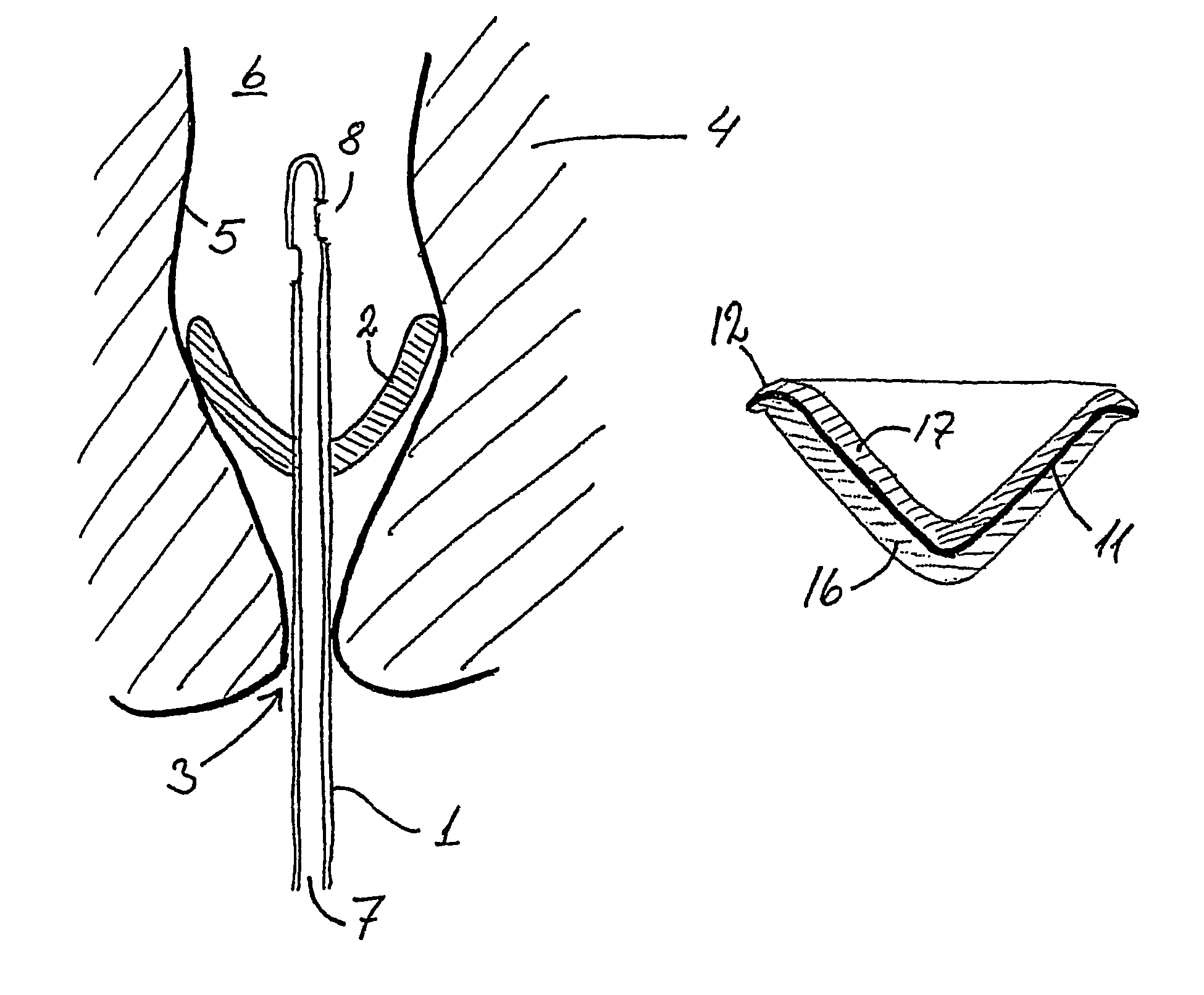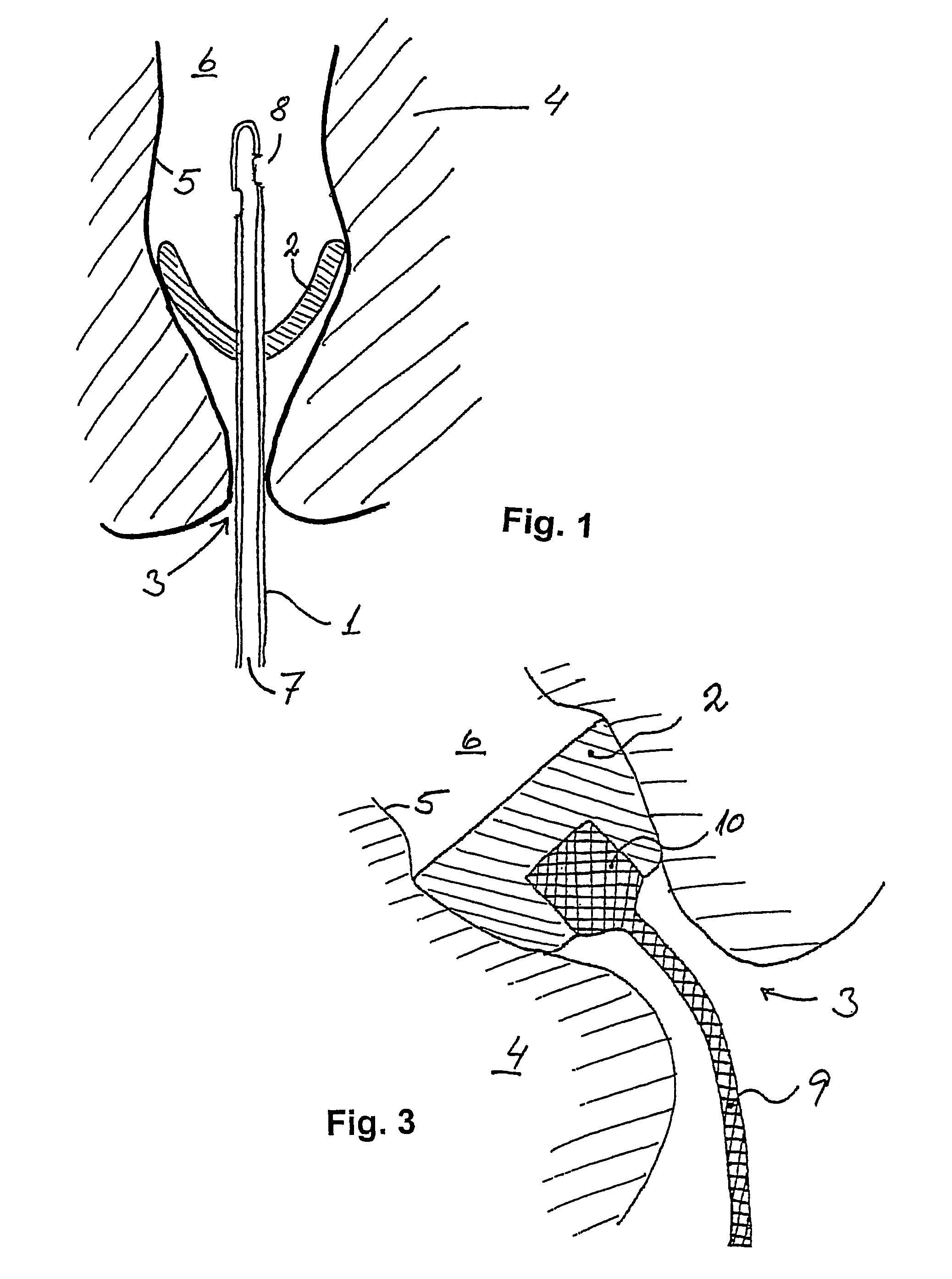Sealing device
a sealing device and a technology of inflatable balloons, which are applied in the field of sealing devices, can solve the problems of serious injury to the fragile wall of the rectum, the number of existing sealing types of enemata probes provided with inflatable balloons, and the inability to meet the needs of patients,
- Summary
- Abstract
- Description
- Claims
- Application Information
AI Technical Summary
Benefits of technology
Problems solved by technology
Method used
Image
Examples
example 1
Use of the Device According to the Invention for Anal Irrigation
[0058]Preferably anus and at least a first part of the product to be inserted and optionally the anal canal were lubricated with a lubricant such as Vaseline / petrolatum to ease insertion of the probe. The probe was inserted through the anal canal and placed in “ampulla recti”, the lower part of the bowel system. A mark or a stop on the probe may be provided to indicates how far the probe it is to be inserted. When inserted the elevated temperature and moisture in the “ampulla recti” will dissolve the PVAH layer surrounding the compressed sealing device and the probe will expand. Now the irrigation media, preferably tab water, was pumped from the reservoir to the bowel (in a typical amount of 0.5-2.5 l, preferably 0.75-1 l). When all the desired water had been pumped into the bowel system the probe was removed immediately or optionally after an additional 1-5 minutes. Evacuation of the bowel will take place over the next...
example 2
Determining the Resilience of the Device
[0060]An important feature of the device of the present invention is the resilience or softness of the sealing element. The relative resilience of different types of rectal probes was determined in the following way:
[0061]A standard tensile strengths apparatus was mounted with two flat plates. The probe was inflated (balloons) or expanded with water (foams) according to manufacturers instructions and inserted between the plates. If the manufacturer did not provide instructions of the size of the probe in the inflated state, inflation to diameter 60 mm was used in the test. The tensile strengths apparatus is activated to compress the balloon / foam 10 mm. The force / mm diagram is recorded and maximum force (N) was achieved. The test was repeated three times for each probe.
[0062]Table 1 shows the maximum compression force determined for two embodiments of the invention, a balloon and a foam device, and for different well-known probes in the market....
example 3
Preparation of a Sealing Device
[0065]In the following and by example only a method for making a sealing device is described in further detail.
[0066]A to-part mould was preheated and parted. The lower part was covered by a 15 μ PU-foil and kept in place e.g. by a rubber band. It is important that the foil is without wrinkles. The upper part of the form was carefully pressed unto the lower part, and a rounded mandrel was entered through the filling opening of the upper part to press and deform the foil. After removal of the mandrel the PU-based foam was formed by introducing the raw materials into the form and blocking the filling opening to stop the formed foam from escaping. The temperature was kept around 50° C. for about 8 minutes, hereafter the form was opened and the device removed for further drying at around 55° C. for approximately 1½ hour.
PUM
| Property | Measurement | Unit |
|---|---|---|
| compression force | aaaaa | aaaaa |
| compression force | aaaaa | aaaaa |
| compression force | aaaaa | aaaaa |
Abstract
Description
Claims
Application Information
 Login to View More
Login to View More - R&D
- Intellectual Property
- Life Sciences
- Materials
- Tech Scout
- Unparalleled Data Quality
- Higher Quality Content
- 60% Fewer Hallucinations
Browse by: Latest US Patents, China's latest patents, Technical Efficacy Thesaurus, Application Domain, Technology Topic, Popular Technical Reports.
© 2025 PatSnap. All rights reserved.Legal|Privacy policy|Modern Slavery Act Transparency Statement|Sitemap|About US| Contact US: help@patsnap.com



